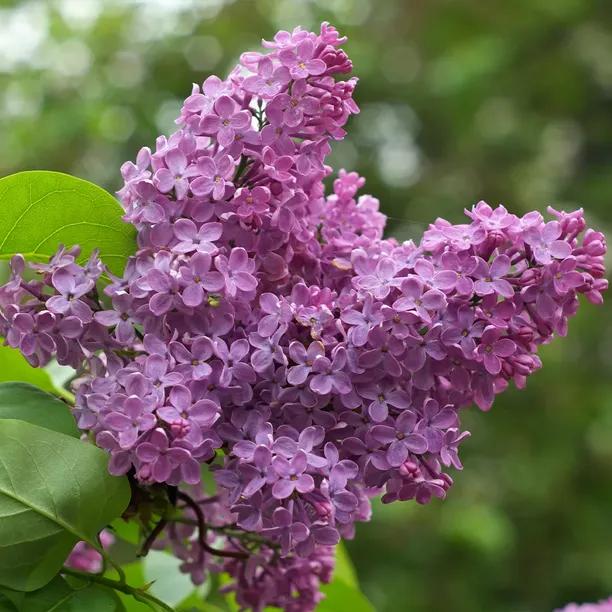Common Lilac Hedge Plants

The details
Syringa vulgaris
Hedge Plants- Large, fragrant pink flowers.
- Grows well on chalk.
- Good rough hedging & screening.
- Max. Height: 6m
- Bareroot Delivery Only: Nov-Mar.
Recommended extras
Description
Syringa Vulgaris Hedging
Delivered by Mail Order Direct from our Nursery with a Year Guarantee
The Common Lilac tree, Syringa vulgaris, makes a lovely flowering hedging plant or large specimen shrub / small tree, suitable for a small garden.
Lilac can reach 6-7 metres if it grows freely as a tree.
Lilac hedge plants are only delivered bareroot, during winter (Nov-March).
All our hedge plants are measured by their height in centimetres above the ground (the roots aren't measured).
See our selection of hedge shrub plants or view our full range of hedging.
Spacing a Lilac hedge:
Plant Lilac hedging at 2 plants per metre, 50cm apart.
General description of Lilac plants:
Syringa vulgaris, is a large, deciduous shrub or small tree. It is famous for its large, conical clusters of heavily scented flowers in variable shades of pink, which last through May. The large, vibrant green leaves look lovely all summer and turn in a subdued muddle of dusty yellows and peachy oranges in autumn.
Lilac is usually grown as a specimen tree, but it makes a great, dense informal hedge and flowers hard when it is clipped regularly. Being trimmed will also encourage the plant to sucker from the base, so that the stems on a mature Lilac hedge grow so thickly that you can't see through them in winter. It is a great plant for drawing butterflies into your garden.
History & uses of Syringa vulgaris:
Lilac is native to Eastern Europe and the Ottomans grew it extensively. It has been escaping from gardens into the wild here since the 1500's, so it is widely naturalised.
Planting Instructions
Growing Lilac plants:
It will grow on any well-drained soil, including chalk. It tolerates shade but will flower poorly with less than half a day of full sun, so we really recommend it for sunny places.
Prepare your site before planting:
It is good to dig over the area where you plant a hedge several months in advance, especially if the soil is poor. Destroy the weeds first: nettles, brambles and ground elder are tough. Then dig the soil over; remove rocks, roots and other rubbish. Mix in well rotted compost or manure down to the depth of about 2 spades. If your soil is rich, you don't have to dig it over, but killing all the weeds is still necessary.
Watch our video on how to plant a garden hedge for full details. The plants in this video are delivered pot-grown, but planting out bareroot stock is essentially the same.
Remember to water establishing plants during dry weather for at least a year after planting.
Hedge Planting Accessories:
Prepare your site for planting by killing the weeds and grass.
You can buy a hedge planting pack with sheets of mulch fabric and pegs to hold it down.
If you are planting in an area with rabbit and/or deer, you will need to use a plastic spiral guard for each plant, supported by a bamboo cane.
If your soil quality is poor, we recommend using mycorrhizal "friendly fungi" on the roots of new trees and shrubs.
You can also improve your soil with bonemeal organic fertiliser.
After Care
After you have planted your Lilac hedge, the most important thing to do is water it in dry weather. You will also need to weed around the plants. Watering should be thorough, so the ground is soaked. Let the soil almost dry out before watering again. Watering & weeding will be necessary for at least a year after planting.
Trimming Formal hedge plants:
Lilac doesn't need any clipping at all in its first year.
In the winter of the year after planting, your young hedge should be trimmed lightly and then every winter after that until it is mature.
When it is fully grown, you can clip it at anytime. A good time to clip Lilac hedges is after they finish flowering.
Special notes on caring for Lilac hedges:
Lilac loves rich soil and mature hedges will appreciate a liquid nitrogen-based feed in spring. If you didn't use a mulch fabric, it is beneficial to mulch around the base of the hedge each year.
Hygiene & Diseases:
Dead, damaged or diseased wood can be pruned off as soon as it appears.
Disinfect your pruning tools between every cut if there is any sign of disease.
Burn or dispose of any diseased material, do not compost it.
After you have planted your Lilac hedge, the most important thing to do is water it in dry weather. You will also need to weed around the plants. Watering should be thorough, so the ground is soaked. Let the soil almost dry out before watering again. Watering & weeding will be necessary for at least a year after planting.
Trimming Formal hedge plants:
Lilac doesn't need any clipping at all in its first year.
In the winter of the year after planting, your young hedge should be trimmed lightly and then every winter after that until it is mature.
When it is fully grown, you can clip it at anytime. A good time to clip Lilac hedges is after they finish flowering.
Special notes on caring for Lilac hedges:
Lilac loves rich soil and mature hedges will appreciate a liquid nitrogen-based feed in spring. If you didn't use a mulch fabric, it is beneficial to mulch around the base of the hedge each year.
Hygiene & Diseases:
Dead, damaged or diseased wood can be pruned off as soon as it appears.
Disinfect your pruning tools between every cut if there is any sign of disease.
Burn or dispose of any diseased material, do not compost it.


